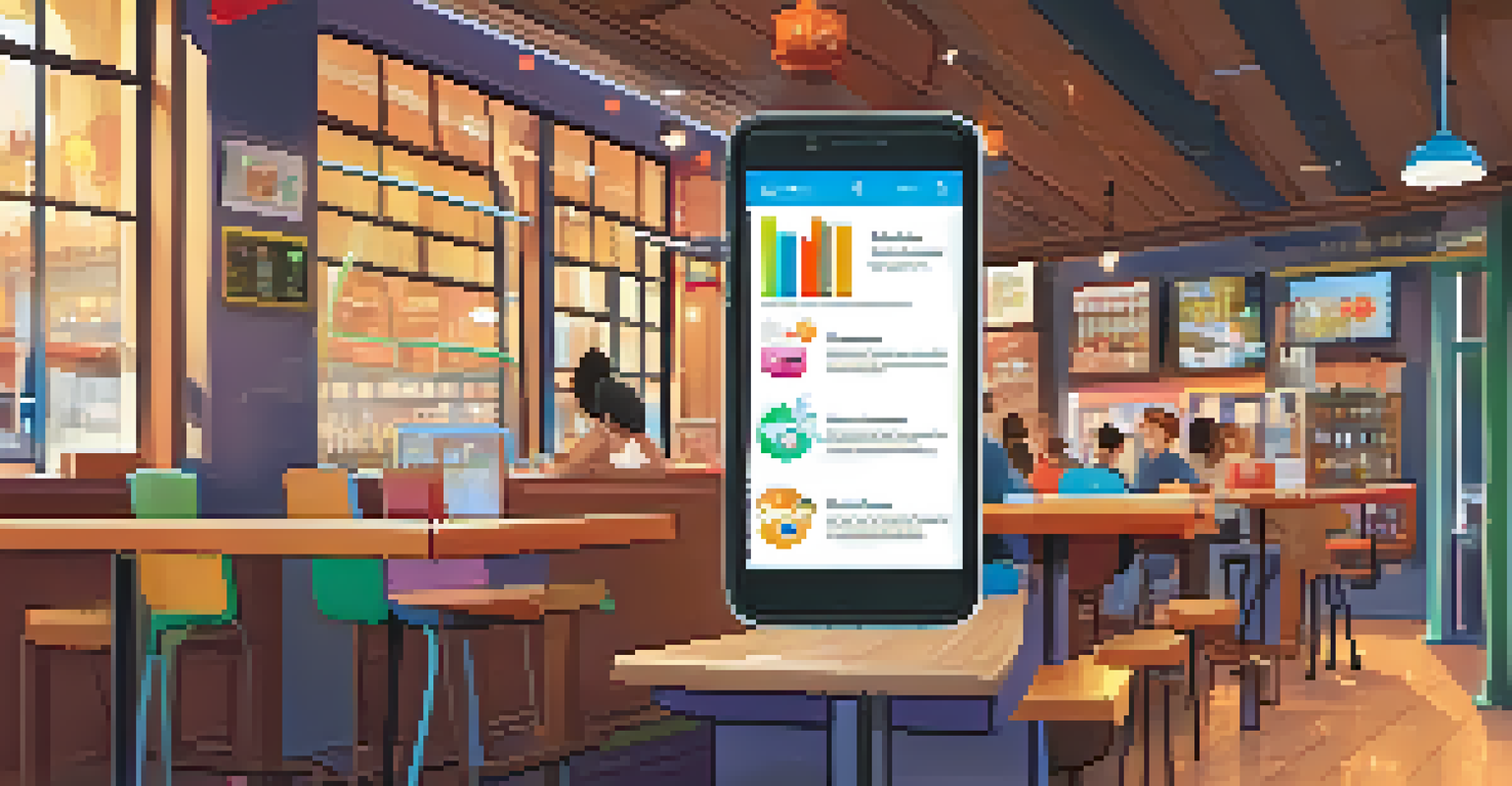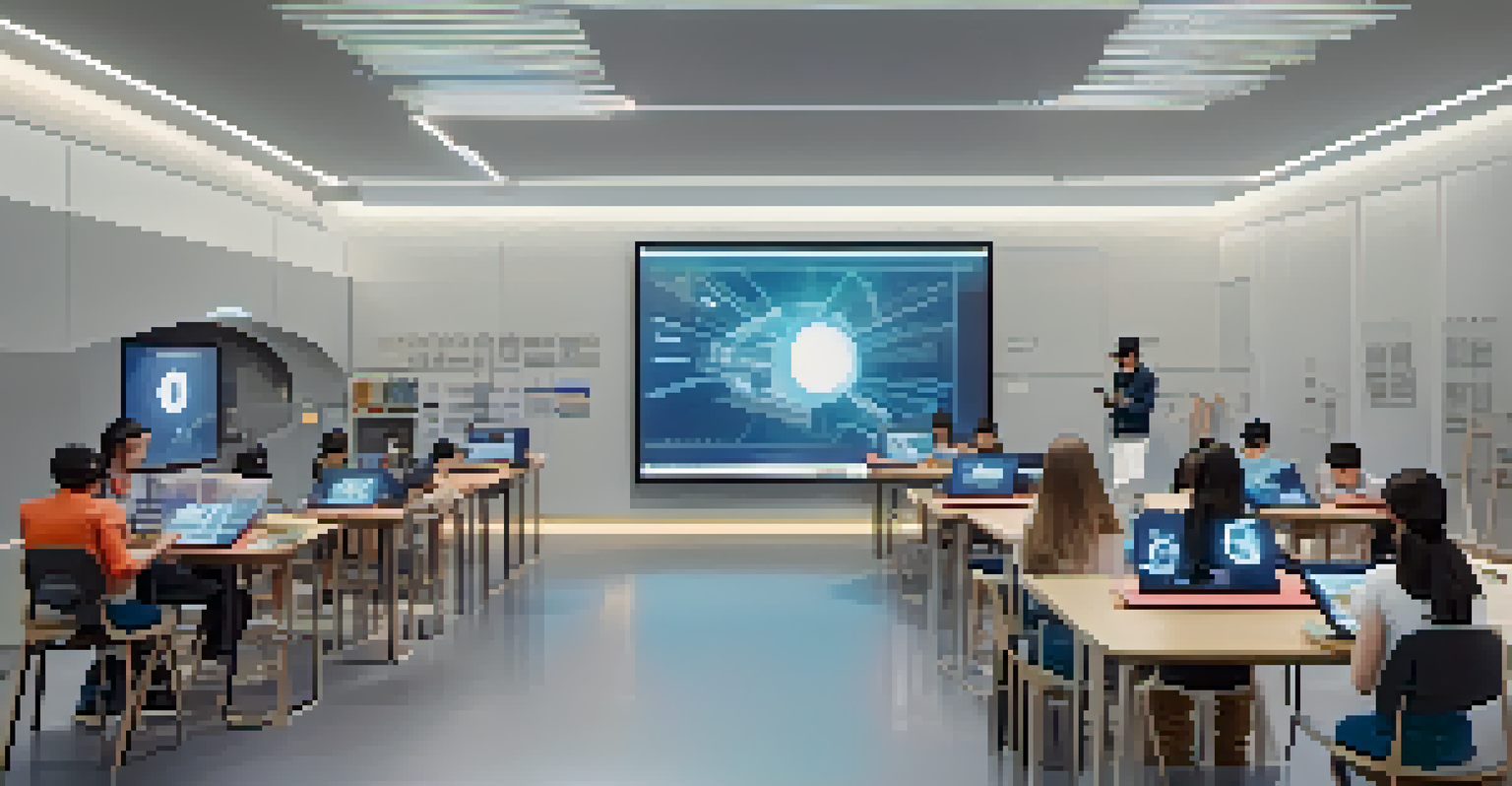The Role of Gamification in Enhancing Digital Literacy Skills

Understanding Digital Literacy in Today's World
Digital literacy isn't just about knowing how to use a computer; it encompasses a range of skills including online communication, information evaluation, and content creation. As our world becomes increasingly digital, these skills are essential for navigating everyday life, from job applications to social interactions.
Digital literacy is not a luxury; it is a necessity for success in the 21st century.
Being digitally literate means being able to critically assess the information we encounter online, which is crucial in an era of misinformation. This skill set empowers individuals to not only consume content but also create and share their own, contributing meaningfully to online communities.
As digital tools evolve, so too must our approaches to teaching these skills. Traditional educational methods often fall short, leading to the exploration of innovative solutions like gamification.
What is Gamification and How Does It Work?
Gamification is the application of game-design elements in non-game contexts, aimed at enhancing user engagement and motivation. By incorporating elements like scoring systems, challenges, and rewards, gamification creates an interactive learning environment that can make complex subjects more digestible.

Think of it like turning a mundane task into a fun game—suddenly, learning feels less like a chore and more like an adventure. When students encounter challenges that require digital skills, they're often more eager to solve them when a game-like structure is in place.
Digital Literacy is Essential
In today's digital age, being digitally literate is crucial for effectively navigating online communication, information evaluation, and content creation.
This approach taps into our natural desire for achievement and competition, making the learning process enjoyable and effective. It shifts the focus from rote memorization to practical application, which is vital for developing digital literacy.
The Benefits of Gamification in Learning
One of the primary benefits of gamification is increased motivation. When learners are rewarded for their efforts, whether through points, badges, or levels, they are more likely to engage with the material consistently. This motivation can lead to better retention of information and skills.
Gamification is the bridge that takes learning from mundane to magnificent.
Moreover, gamification fosters a sense of community among learners. Many gamified platforms encourage collaboration, allowing users to work together to achieve common goals, which can enhance their communication skills—an essential component of digital literacy.
Additionally, gamified learning environments often provide instant feedback, helping users identify areas for improvement. This immediate response is crucial for reinforcing learning and adapting strategies on the fly.
Real-World Examples of Gamification in Action
A great example of gamification is Duolingo, a language-learning app that incorporates game mechanics to teach users new languages. Learners earn points for completing lessons, which keeps them motivated and engaged while building their language skills.
Another noteworthy example is Codecademy, which gamifies the process of learning coding. Users can tackle challenges and earn badges as they progress, making the often intimidating world of programming more accessible and fun.
Gamification Enhances Learning
By incorporating game-like elements into education, gamification boosts motivation and engagement, making complex subjects easier to understand.
These platforms not only make learning enjoyable but also empower users to develop practical skills that are highly sought after in today’s job market.
Challenges in Implementing Gamification
While gamification has its perks, it also comes with challenges. One major concern is that not all users respond positively to game mechanics; some may find them distracting rather than motivating. It's essential to tailor gamified experiences to the preferences of the target audience to avoid disengagement.
Moreover, creating effective gamified content requires careful planning and execution. If the game elements are poorly designed or misaligned with learning objectives, they can lead to confusion and frustration rather than enhanced understanding.
Lastly, there’s the risk of focusing too much on rewards, which can detract from intrinsic motivation. Balancing external incentives with a genuine passion for learning is crucial to ensure lasting engagement.
The Future of Gamification in Digital Literacy Education
As technology continues to advance, the potential for gamification in education will only grow. With the rise of virtual and augmented reality, we can expect even more immersive experiences that enhance digital literacy skills in unique ways.
Future developments may include personalized learning paths that use gamification to adapt to individual learning styles and paces. This approach could help learners master digital skills more effectively, catering to their specific needs.
Future of Education is Interactive
The future of gamification in education promises personalized and immersive learning experiences that cater to individual needs and enhance digital skills.
Overall, the future looks promising for gamification as a tool to enhance digital literacy, making it not only a fun experience but also an essential part of modern education.
Conclusion: Embracing Gamification for Better Learning
In conclusion, gamification presents a powerful opportunity to enhance digital literacy skills in a way that is both engaging and effective. By incorporating game-like elements into educational settings, we can motivate learners and help them acquire the essential skills they need in today’s digital landscape.
As we move forward, it's important for educators, organizations, and learners to embrace these innovative approaches. The right balance of gamification can transform the learning experience, making it not just educational but also enjoyable.

Ultimately, gamification isn't just about adding fun to learning—it's about creating a more skilled, informed, and digitally literate society.